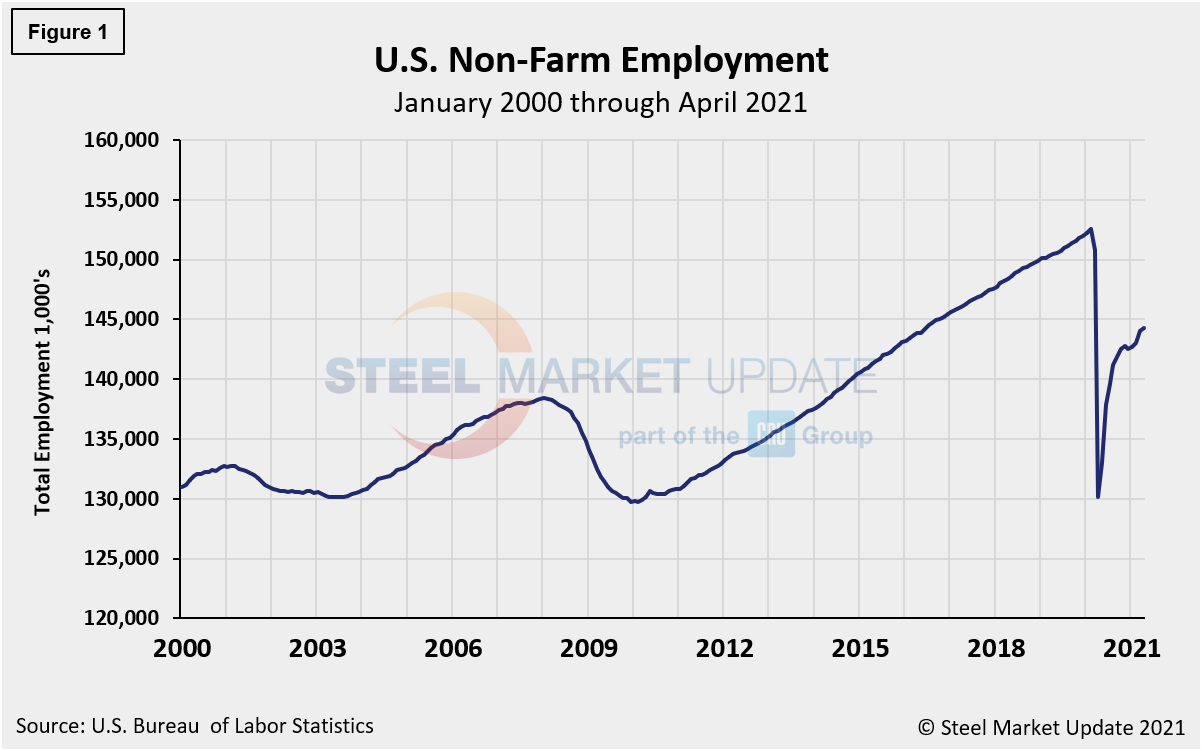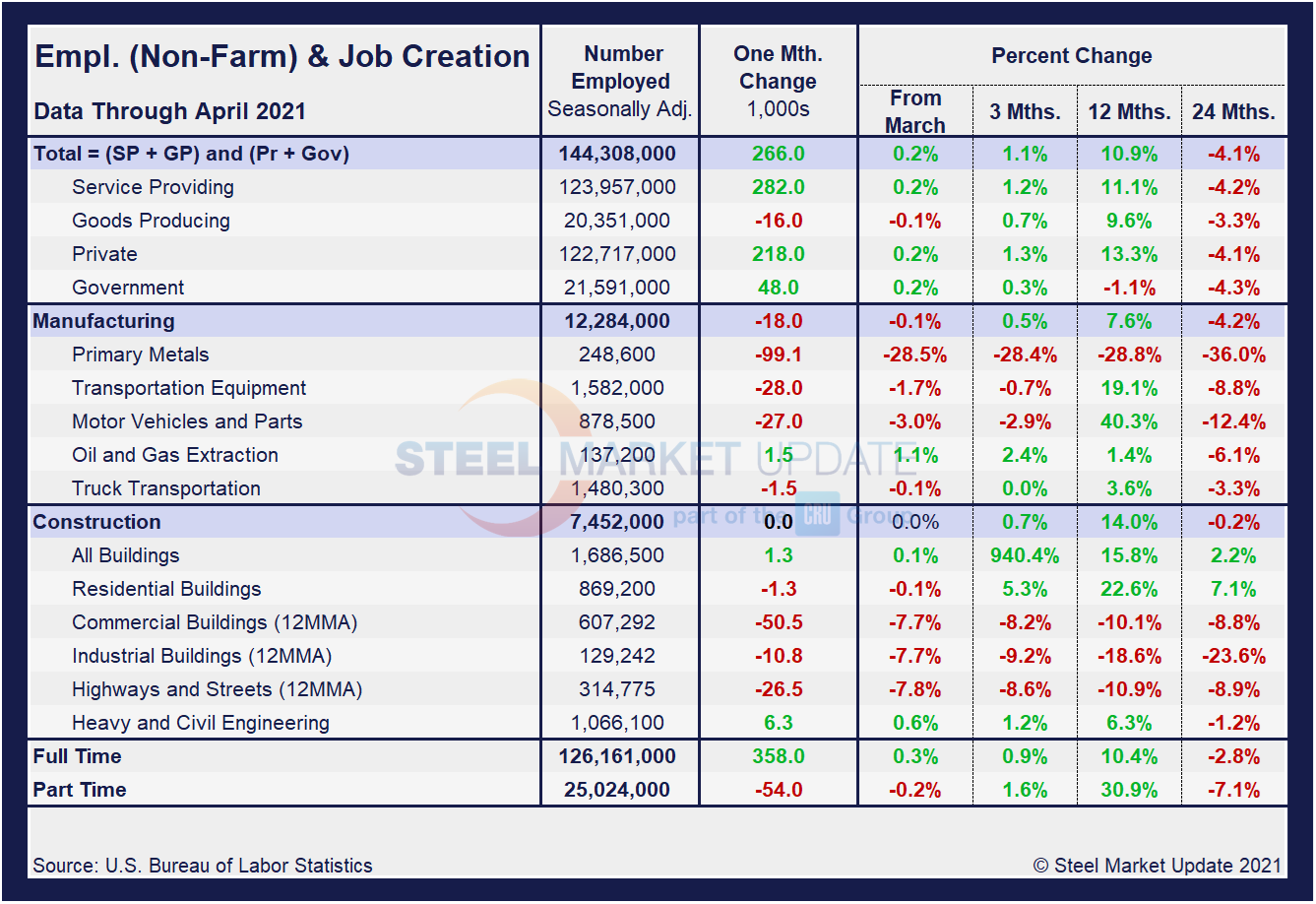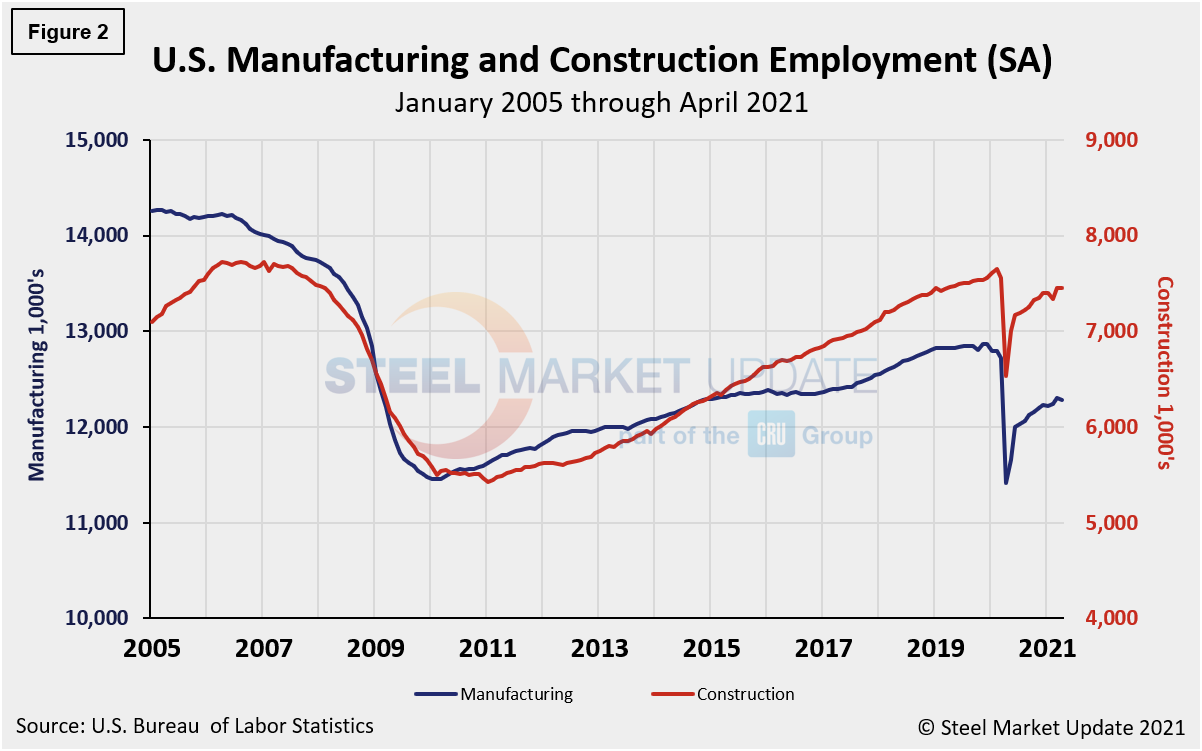Market Data

May 10, 2021
Employment by Industry: April’s Deceleration a Surprise
Written by David Schollaert
The U.S. labor market had a disappointing showing in April as employment’s recovery hit a snag. The U.S. Bureau of Labor Statistics (BLS) reported that employers added just 266,000 workers to their payrolls in April, a far cry from the 770,000 new jobs added in March and 536,000 in February.
Following the fastest gain in over 12 months in March, experts expected April’s workforce to grow by nearly 1.0 million. The final result, at about one-quarter of that prediction, was largely attributed to the continuation of enhanced unemployment benefits and some seasonal factors that skewed expectations for job creation. Employment in leisure and hospitality increased by 331,000, as pandemic-related restrictions continued to ease in many parts of the country. However, those jobs were partially offset by losses in temporary help services and in couriers and messengers.
The unemployment rate rose slightly at 6.1% in April, compared to 6.0% the month prior. The number of unemployed persons, at 9.8 million, was little changed in April. Compared to the 22.5 million who were out of work in April 2020, that figure seems very positive, but it’s still nearly double the 5.7 million unemployed in February 2020, before the pandemic threw the labor market into chaos, when the unemployment rate was a mere 3.5%. Due to the pandemic fallout, the baseline against which future comparisons will be made is February 2020, the all-time high for nonfarm employment at 152,463,000. Figure 1 shows the total number of people employed in the nonfarm economy.

Designed on rolling time periods of 1 month, 3 months, 1 year and 2 years, the table below breaks total employment into service industries and goods-producing industries, and then into private and government employees. Most of the goods-producing employees work in manufacturing and construction. Comparing service industries and goods-producing in April shows service jobs to have increased by 0.2%, while goods-producing fell by 0.1% from March’s result. Note, the subcomponents of both manufacturing and construction shown in this table don’t add up to the total because we have only included those with the most relevance to the steel industry.

Comparing April to March, manufacturing employment fell by 0.1% versus a rise of 0.5% the month prior. Construction was unchanged month on month after rising by 1.5% in March. Despite the surge and repeated increases in February and March, the deceleration in April points to the significant obstacles the U.S. economy and employment still must overcome to recover from the decimating blow COVID-19 delivered. As a result, 3-month, 12-month and 24-month comparisons remain problematic due to the extensive losses resulting from pandemic. In the year-over-year contrast, manufacturing is up 7.6% and construction is up 14.0%. Further growth is still expected as the marketplace advances from the freefall seen during the second quarter of 2020.
Manufacturing employment fell by 18,000 in April, led by a loss of 99,100 in primary metals, followed by losses of 28,000 and 27,000 in transportation equipment and motor vehicles and parts. Construction employment was even month on month as the added jobs in all buildings were offset by a loss in residential construction positions. Employment in the construction industry overall has grown by 917,000 over the past year, but is still 196,000 below its February 2020 level, according to the BLS data. Figure 2 shows the history of employment in manufacturing and construction since January 2005.

The reported number of unemployed manufacturing and construction workers is shown in Figure 3. While manufacturing unemployment rose in April, construction unemployment was down month on month. Manufacturing’s unemployed persons increased from 780,000 in March to 861,000 in April, a 10.4% increase. Construction unemployment fell by 8.0% month on month, from 835,000 in March to 768,000 in April.

Explanation: On the first or second Friday of each month, the Bureau of Labor Statistics releases the employment data for the previous month. Data is available at www.bls.gov. The BLS employment database is a reality check for other economic data streams such as manufacturing and construction. It is easy to drill down into the BLS database to obtain employment data for many subsectors of the economy. The important point about all these data streams is not necessarily the nominal numbers, but the direction in which they are headed.
By David Schollaert, David@SteelMarketUpdate.com







